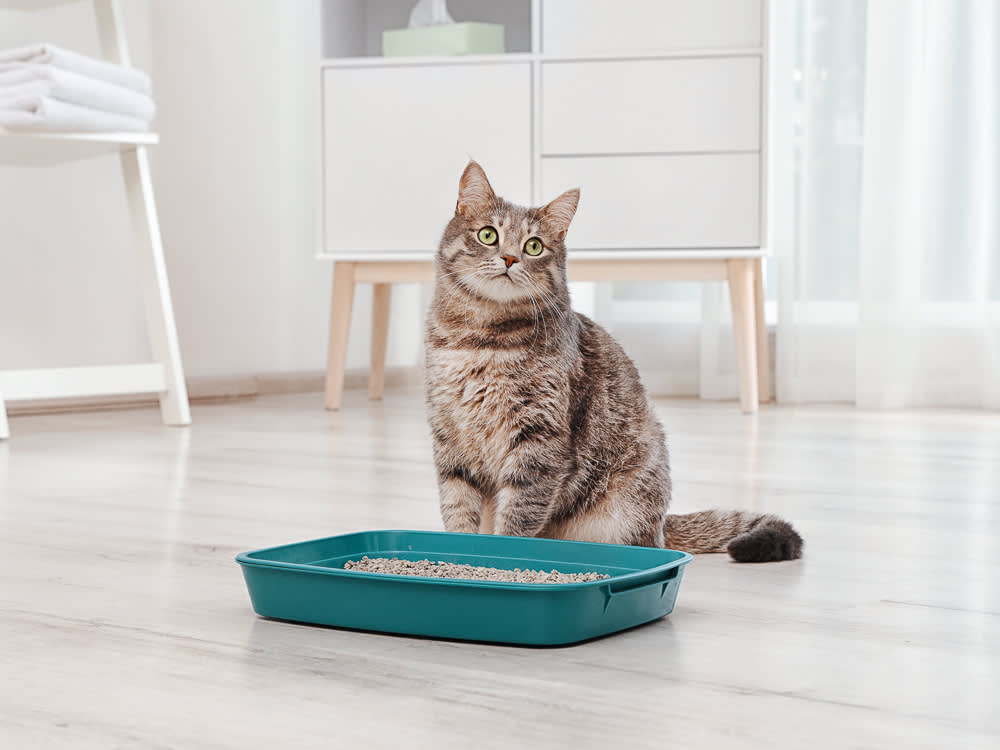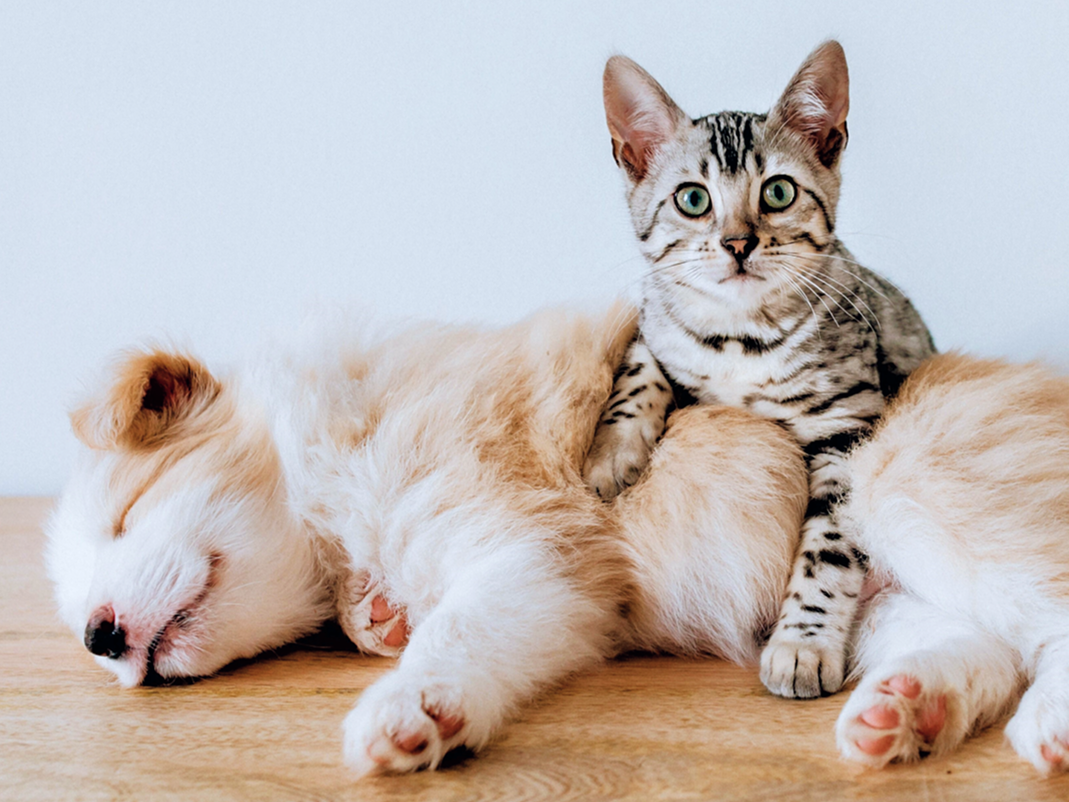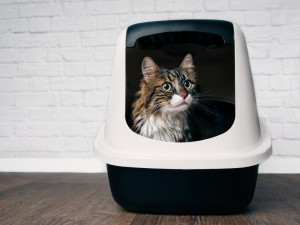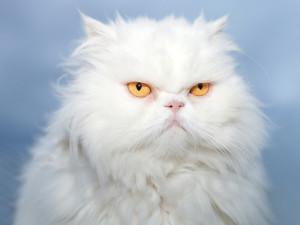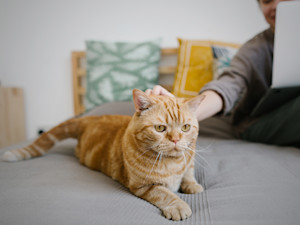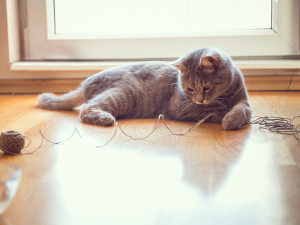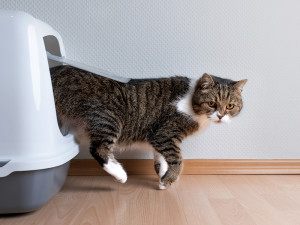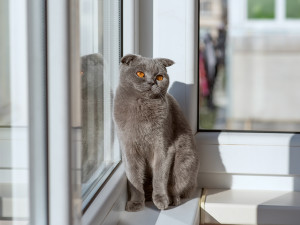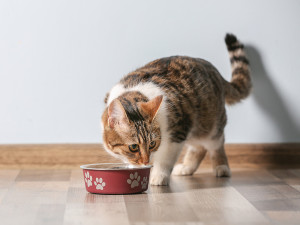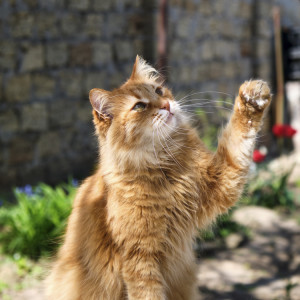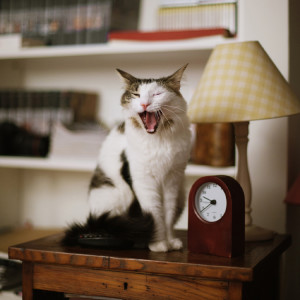Your Cat Can’t Poop—What Now?
Here’s how to deal with cat constipation.
In This Article:
Symptoms of Cat Constipation Causes of Constipation in Cats Home Treatments For Constipation When to Seek Veterinary Care How to Help Prevent Constipation Long Term Effects of Constipation
Litter box issues can be the bane of kitty existence. As you know, your cat is very... particular. The litter box can be too dirty, too dusty, too inconvenient, or maybe shared with their mortal enemy. There’s a lot that can go wrong in there, which is why it’s a red flag when your cat’s litter box habits change. Worry not — here’s how to help a constipated cat.
Check out customizable policies from our friends at Lemonade Pet Insurance—so you only pay for what you need.
Symptoms of cat constipation
A constipated cat has difficulty pooping, hardly ever poops, or stops pooping completely. When it comes to how to tell if a cat is constipated, common cat constipation symptoms include posturing and straining inside or outside of the litter box while only producing little or no stool. Vocalization, vomiting, poor appetite, or abdominal pain can also be seen in constipated cats.
A side note about straining in the litter box — cats can strain in the litter box when they are having difficulty defecating or urinating. If your cat is straining to defecate, they require treatment but can often wait until you schedule an appointment with your veterinarian in the very near future. But if your cat is unable to urinate, they need medical attention urgently. Check the litter box closely to ensure that your cat has urinated recently. If no urine is coming out (especially in male kitties), get them to the vet ASAP.
How much do you spend on your pet per year?
Causes of constipation in cats
Dehydration
Dehydration commonly develops when a cat is not drinking enough water or loses fluid from vomiting. Underlying health issues, such as diabetes mellitus or kidney disease can increase urine production and contribute to fluid loss. When the body doesn’t have enough water, it will try to pull extra water from the colon, leading to dry, hard stool that is difficult to pass.
Orthopedic pain
Just like dogs and people, cats can develop arthritis as they age. Older cats or cats with a history of a traumatic injury can have hip or lower back pain that makes posturing to defecate uncomfortable. For some cats, simply getting into the litter box presents a challenge, especially for senior cats with stiff joints.
Litter box anxiety
Cats often steer clear of litter boxes that are dirty, difficult to access, or near people or pets who cause them anxiety. Some cats need peace and quiet during their bathroom trips, so a litter box next to a running washer or dryer may stress them out. Holding onto stool for too long increases the risk of constipation.
Other causes
Tumors or foreign material can cause physical obstructions that hinder the passage of stool. Certain medications or recent anesthesia can slow GI motility, leading to constipation. Tailless cat breeds, such as Manx cats, are at increased risk for congenital problems with the nerves of the colon. These cats often develop chronic issues with constipation or fecal incontinence.
How to treat cat constipation at home
The treatment for constipation depends on the severity. Restoring hydration is an essential first step in treating constipation, and you can do this at home. Home strategies may include feeding canned food to increase water intake. While using an over-the-counter enema at home may seem like a good idea, these should be avoided because many are toxic to cats.
When to seek veterinary care for constipation
If your cat is frequently constipated or has been constipated for more than 48 to 72 hours, you should seek veterinary care. Veterinarians can restore hydration using subcutaneous fluid therapy or hospitalization for IV fluid therapy. If your cat is not urinating, get them to the veterinarian immediately. If they are showing signs of complete obstruction, including vomiting and abdominal pain, they should see a vet as soon as possible.
The next step after hydration is getting some of the poop out of your cat. This typically involves an enema or two (or 10) and time to allow your cat to have a bowel movement on their own. If enemas don’t work, your veterinarian will manually remove the hard, dry stool to help get things moving.
This procedure is called deobstipation. No cat appreciates this process, so it commonly requires sedation or anesthesia. Don’t try this at home, not that you’d even want to. Your veterinarian may also prescribe a laxative or recommend a psyllium-rich diet to help with colonic motility — anything to keep things moving.
How to help prevent constipation in cats
There are some ways to help prevent constipation in cats before it ever becomes a problem.
1. Adjust diet and fluid intake.
Encourage your cat to drink by providing easily accessible fresh water. Kitty drinking fountains can increase water intake in cats who prefer flowing water.
2. Increase frequency of litter scooping.
Minimize the stress associated with litter box visits by providing clean, easily accessible litter boxes that are comfortable for your cat to use. Ideally, have at least one litter box per cat in the household, located in an area with some privacy. Keep longhaired cats well-groomed to prevent constipation from hairballs or matted fur under the tail.
3. Increase exercise opportunities.
Encourage your cat to be active, as sedentary cats are more likely to become constipated. Discuss chronic pain management with your veterinarian if your cat has arthritis or chronic pain from a previous injury.
Special diet considerations
Cats who experience constipation may benefit from more fiber in their diet. Discuss switching to a fiber-rich diet or adding a fiber supplement with your veterinarian before starting. For some cats with obstipation, extra fiber is not the answer.
Adding moisture to a cat’s kibble or giving them wet food can help increase the amount of fluids they receive.
Long-term effects of constipation in cats
A cat who has had an episode of constipation is at increased risk for developing future episodes. A colon that is repeatedly stretched to its max can lose its ability to contract normally. Kitties who experience recurrent bouts of constipation or have their constipation go untreated can become obstipated — which occurs when constipation is so severe that a cat is completely unable to pass stool. Stool continues to accumulate and harden, which leads to megacolon (yes, this is a medical term).
Megacolon is irreversible and requires aggressive treatment and sometimes even surgical intervention. If you’re feeling brave, perform an image search for “feline megacolon.” It’s the worst of the worst (you’ve been warned).
FAQs (People also ask)
What should you give a constipated cat?
Constipated cats should be given an increase of fluids. A veterinarian can help with removing the blockage or providing additional fluids.
Should I be worried if my cat is constipated?
If your cat has been constipated for longer than 48 hours, frequently becomes constipated, or is showing signs of pain, you should take them to a veterinarian.
Can I give my cat olive oil for constipation?
Olive oil may cause diarrhea or sickness in a cat; it is recommended to see a veterinarian for additional fluids.
What should I do if my senior cat is constipated?
If a cat has been constipated for longer than 48 hours or is showing signs of pain, they should see a veterinarian.
Can cats die from constipation?
If left untreated, constipation can lead to dehydration, which can be fatal. Megacolon can also cause death in cats if their colon bursts.
